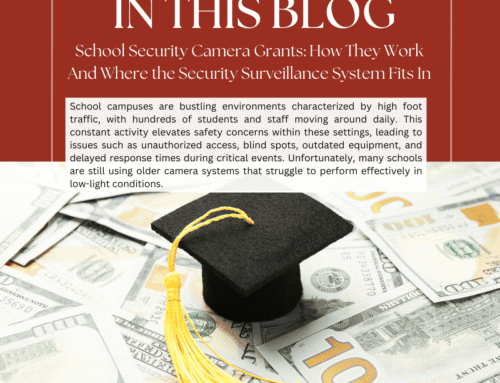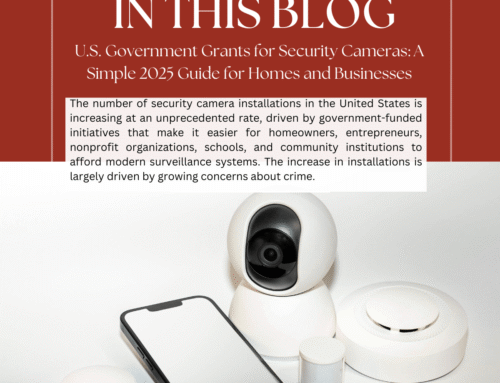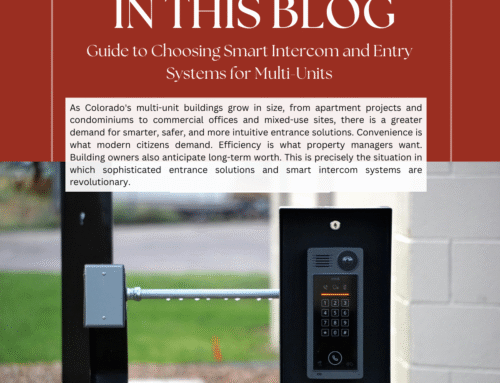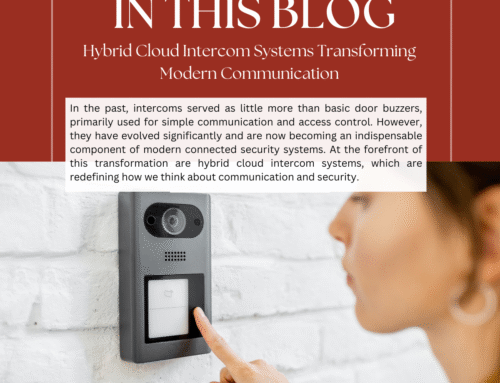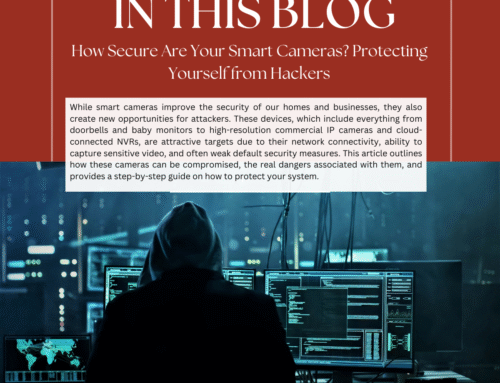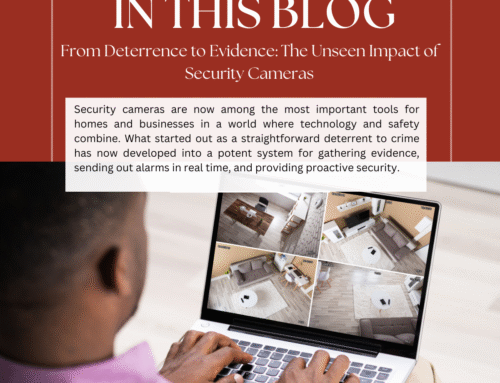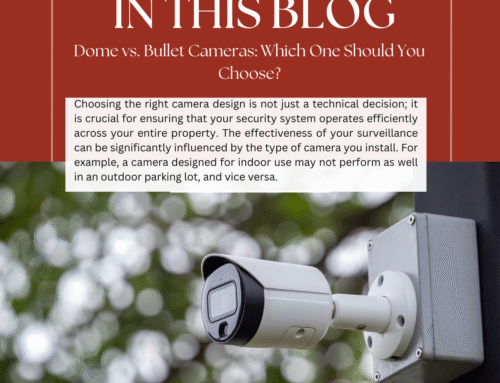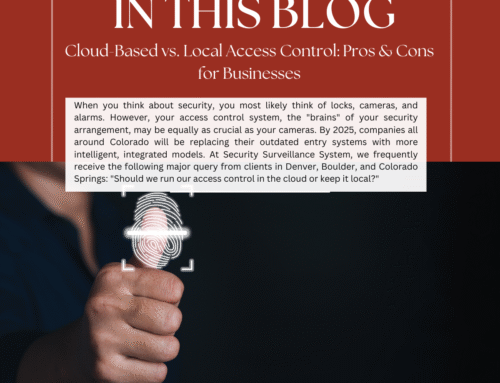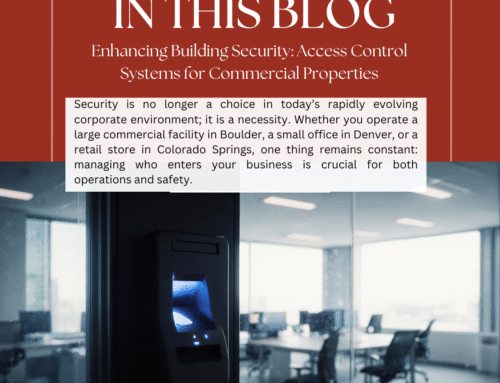Why Hospitals Need Advanced Access Control Systems for Patient Safety
Why Hospitals Need Advanced Access Control Systems for Patient Safety
Patient safety and data privacy are more important than ever in the modern healthcare setting. Foot traffic, sensitive data, and expensive equipment create major security challenges for hospitals. Advances access control system prove helpful in this situation.
Patient care in contemporary hospitals depend of safe, intelligent access control system in addition to AI-driven workflows and interconnected medical devices. In today’s digitally linked health care institution, solution maintain data integrity, improve operational efficiency, and guarantee patient safety.
The goal of access control in hospitals is to prove a safer, more secure environment for patients, employees, and guest, not only to restrict access.
Preventing Unauthorized Access to Patients
Children, the elderly, and those in critical condition are among the vulnerable groups that hospitals treat. Unauthorized people can readily enter critical facilities including maternity wards, intensive care units, and surgical suites, as well as psychiatric and rehabilitation units, if access control is inadequate.
By limiting access to these restricted locations to authorized workers only, keycard systems, biometric access, and face recognition technology reduce the possibility of disruption, injury, or privacy breaches.
Preventing Infant Abductions and Patient Elopement
If someone tries to move a patient or baby outside safe borders, hospitals can integrate access control systems with tracking apps and infant security tags to notify personnel. In the event of a possible abduction attempt, hospitals can automatically:
- Lock down exit points,
- Sound an alarm if a confused patient departs a secure floor,
Keep an eye on who can enter the pediatric and newborn units.
Controlling Real-Time Visitor Access
Every day, hundreds of people visit modern hospitals. Sign-in sheets from the past are no longer sufficient. Cloud-based visitor management solutions allow hospitals to:
- Issue digital passes or time-sensitive access cards,
- Monitor who enters the premises and for how long,
- Automatically enforce visiting hours or flag high-risk guests.
This improves patient comfort and safety while lowering the likelihood of disruptive behavior.
Protecting Pharmaceuticals and Medical Records
Access control systems are also essential for protecting regulated drugs and data. Regulations like HIPAA, which mandate limited access to Electronic Health Records (EHRs) and pharmaceutical storage, must be followed by hospitals.
More sophisticated systems can:
- Limit access to data centers and pharmaceutical rooms,
- Connect with surveillance to receive real-time warnings,
- Monitor and record access attempts for audits.
Employee Responsibility and Workflow Effectiveness
Enhancing operational transparency involves knowing who accessed what area and when. Hospitals can:
- Keep an eye on staff movements in delicate areas;
- Make sure hygienic or sterilizing procedures are followed;
- Cut down on unapproved overtime and facility abuse.
A culture of efficiency, professionalism, and safety is promoted by this accountability.
Lockdown and Emergency Response Capabilities
Access control systems enable immediate lockdowns or limited entry zones to safeguard patients and employees during situations like active threats, fires, or pandemics. Administrators have the ability to:
- Remotely lock particular floors or wings;
- Direct pedestrian traffic to secure exits; and
- Instantly access emergency services via mobile credentials.
Connectivity to Other Security Mechanisms
An extremely sophisticated hospital access control system easily connects to:
- CCTV surveillance cameras;
- video door phones and intercoms;
- fire detection networks and alarm systems.
This cohesive ecosystem facilitates prompt and effective threat response.
Types of Hospital Access Control
To lower security concerns like theft and invasion, a variety of access control solutions can be successfully used in hospital facilities. Numerous technologies may be employed to enhance security, ranging from electronic access systems, hospital access control regulations, and visitor management software to environmental access control solutions like gates and fences.
-
Perimeter Access Solutions
Fences physical barriers, and routes are all part of perimeter access management, which aims to reroute traffic to places that are easily monitored. Basic protection is offered by this kind of hospital access control, but in order to track access events and provide employees the ability to establish audit trails, it should be complemented by other perimeter security solution.
-
Electronic Systems for Access Control
By allowing security personnel to use credential to limit access to important areas and resources, electronic healthcare access control system provide extra security levels.
Electronic locks that are linked to access readers and a central control panel are used to secure entry points. To lower the possibility of unwanted access, authorized employees and visitor are given unique credential through a visitor management system or employees badge entry system that must be shown to a reader in order for access to be allowed.
Hospital administrators may keep an eye on audit trails and access event in real time, as well as setup automatic alerts to notify staff of questionable activity, by using electronic access control depending on the degree of risk, different credential types can be selected for particular regions, with high-security areas protected by many layers of permits and credentials.
Additionally, security personnel may remotely monitor electronic healthcare access control system and deactivate credentials that have been misplaced, stolen, or misused. Wider security equipment like IP security camera systems, environmental sensors, and alarm may also be combined with these solutions to collect more data and provide automated danger responses.
-
On-Premise Access Control Systems
Hospital can have direct control over security system using on-premise access control, which helps to guarantee compliance to operational and privacy rules.
Role-based permission may be enforced by a well-designed hospital access control policy, restricting access to places like data centers and operating rooms. Reliability, scalability, and integration with video security are important consideration.
Biometric authentication, visitor management, and limited elevator access are typical instances of hospital access control. Hospital must consider maintenance and expense when choosing the optimal healthcare access control strategy for their requirements, even while on-premise system offer control and flexibility.
-
Emergency Response and Lockdown Systems
Access control is an essential feature of safety protocol and lockdown systems, especially in hospitals where security is of utmost importance.
The first line of defense against the growing number of incursion and assaults is access control, which make sure that only authorized individual can enter sensitive areas. The competence is critical for risk mitigation and safeguarding employees and patients from possible damage.
Hospital Access Control Policies
By regulating how hospital access control system operate, access control policies assist increases their effectiveness. A zero-trust policy, for instance, would require all medical staff to authenticate before being allowed to access to any places or resources, establishing thorough audit trails to support any further inquiries.
Using access control models is another way that a hospital may implement an access control policy. To restrict the usage of active credentials, administrators might apply certain restrictions. For instance, a rule limiting access to maternity wards to certified staff may be implemented.
Based on the credential holder, role-based permission automatically limit access to high-risk areas assisting administrators un adhering to different law and regulation. Access to private patient rooms, medication stores, and file storage facilities will be restricted, and thorough access records will be automatically generated.
Technologies for Visitor Management
One of the main security concerns in healthcare institution is keeping an eye on visit access. Large numbers of visitors must be tracked by security personnel and healthcare administrators as they go through each facility to make sure they have access to the appropriate areas, are not allowed in sensitive areas, and will be accounted for in case of an emergency.
Using visitor management systems, visitors may be given temporary credentials that allow them to enter particular areas for a certain amount of time. When scheduling an appointment, guests can pre-register. If mobile hospital access control systems are in place, their credentials will be emailed to their cellphones or delivered as a key card upon arrival.
Real-World Statistics
The Joint Commission reports that 75% of workplace assaults take place in medical facilities.
- Since 1965, the National Center for Missing & Exploited Children has documented over 140 child abductions from medical institutions, the majority of which might have been avoided with improved access control.
- Internal security incidents have decreased by up to 40% in hospitals that use integrated access control systems.
Key Advantages of Hospitals and Access Control
Seamless Connectivity and Real-Time Data
- Smart hospitals thrive real-time data flow across IoT devices, doors, cameras, and consoles.
- Centralized, cloud-based access management that facilitates uniform credentialing across facilities, making onboarding and offboarding simple.
Enhanced Patient Safety
- To prevent kidnappings and patient elopement, RTLS-enabled distress badges and newborn tagging systems can automatically initiate lockdowns or alarms.
- Real-time detection of questionable activity, such as loitering or unlawful entry, is made possible via integration with surveillance and AI analytics.
Operational & Infection Control
- Touchless and mobile access systems in smart hospitals expedite workflows at entrance points and minimize cross-contamination.
- By monitoring the movement of personnel and equipment, RTLS can help optimize resource usage.
Control and Responsibility
- Hospitals enhance HIPAA/OSH compliance and incident investigations by providing complete audit logs of who accessed what and when.
Frequently Asked Questions: Healthcare Access Control
Q1: Which kind of access control works best for hospitals?
Answer: A mix of card-based, mobile app, and biometric access control systems with real-time monitoring is the best option.
Q2: Can infection control be aided by access control?
Answer: In agreement. Unnecessary contact and contamination hazards are decreased by touchless entrance and limiting access to sterile zones.
Q3: Does access control comply with HIPAA?
Answer: Yes, when done correctly. Systems need to safeguard patient data and record access occurrences.
Q4: In terms of access control, what qualifies a hospital as “smart”?
Answer: To maximize credentialing, safety, and operations across several locations, a smart hospital makes use of cloud-centralized access systems, RTLS, AI analytics, and smooth connections.
Q5: How are patient and staff safety enhanced by RTLS badges?
Answer: Real-time tracking, distress alarms, prompt incident response, and staff role display are all made possible by them, as the Georgia health system’s 10,000-badge program demonstrates.
Q6: Are infection risks reduced by access control systems?
Answer: Indeed, more than 60% of hospitals have used touchless entry, particularly after COVID, to lessen the spread of pathogens through shared surfaces.
Q7: Do these systems facilitate adherence to regulations?
Answer: Indeed, hIPAA and OSHA compliance is aided by thorough recordkeeping, biometric security, and monitoring, which lowers the danger of audits and breaches.
Q8: What security issues do smart hospitals face most frequently?
Answer: Lack of system interoperability, cybersecurity issues brought on by device connectivity, and greater upfront costs are some of the main obstacles; nonetheless, operational savings and improvements in patient safety yield the return on investment.
Q9: To what extent may internal incidents be decreased by access control?
Answer: Early case studies have shown that integrated layered systems that include credentialing, RTLS, and analytics may minimize internal security incidents by as much as 40%.
Concluding remarks:
Smart hospitals are safe, effective, and responsive spaces that go beyond simple digitization. The foundation of this concept is made up of advanced access control systems, which provide advantages in infection control, personnel safety, patient protection, regulatory compliance, and crisis management.
It is evident from the statistics and trends that hospitals adopting these technologies become safer, more intelligent, and more equipped to meet the demands of future healthcare. Security is patient care in the medical field. Modern access control systems are now necessary for preserving compliance, preserving lives, and fostering trust; they are no longer optional.
For a consultation, get in touch with Security Surveillance System at www.ssscamera.com if you are a healthcare facility in Colorado. Our professionals will assist you in creating a system that safeguards your patients, who are the most important thing.



